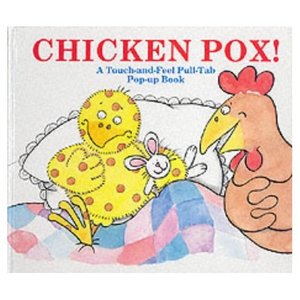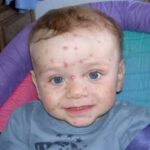Shingles is an outbreak of a painful rash or blisters that is caused by the virus that causes chicken pox. Once the chickenpox outbreak is over, the virus that caused it will retreat to the nerve cells in the body. It can lie dormant there for decades, sometimes never reappearing at all. However, under certain conditions, the virus is activated again and it manifests itself as a painful, irritating, rash called shingles. Usually pain, numbness, tingling or itching are the first signs of a shingles outbreak. The pain can be so severe that it can be mistaken for other conditions such as kidney stones or appendicitis. Only when the rash appears, can a definitive diagnosis of shingles be made.
The rash will begin as a cluster of small bumps that develop into blisters. This rash will typically appear on a single side of the body, usually on the torso. The blisters eventually erupt and form scabs.
There is no cure for shingles. There are medications called zovirax or valtrex that will help keep the infection under control and shorten the duration of the outbreak. This may also help lessen the pain. However, the antiviral medicines need to be started within 48 hours of symptom development to do any good.
Many people that develop shingles will also develop a complication called post-herpetic neuralgia (PHN). This can cause pain to be present in the affected area for months or years after the blisters disappear. This pain can be so severe it can be disabling, especially in older adults. The treatment of pain is the top priority.
Common treatments for the pain from shingles are:
Corticosteroids. While the administration of oral corticosteroids is not effective in everyone, it can still be useful when used in conjuction with an antiviral to help control the pain.
Analgesic. The pain from shingles may range from mild to severe. Over the counter analgesics may be effective in controlling mild pain.
With PHN the objective is pain control. These methods may range from creams to anticonvulsants. The common treatments for the PHN are:
Capsaicin creams. These are creams made from an extract found in hot chili peppers. It will produce an analgesic effect when applied three to five times daily.
Lidocaine patches. These patches can reduce pain significantly, but the effect is temporary, lasting only about 12 hours.
Tricyclic antidepressants. These medicines can lessen pain by inhibiting the re uptake of serotonin and norepinephrine neurotransmitters. These medicines do not act right away. It takes, on the average, about three months to reach full effect.
Anticonvulsants have been effective in controlling pain in PHN patients. They can also be effective in treating the sleep disturbances that can sometimes accompany PHN.
Transcutaneous electrical nerve stimulation (TENS). This device will deliver low-level pulses of electrical current when applied directly to the skin and can offer pain relief for some people with PHN.
Shingles cannot be passed from person to person. However, they can cause chickenpox in someone who has not already had the chickenpox. If you think that you may be experiencing an outbreak of shingles, see your doctor right away. Early intervention is your best chance at reducing the pain from shingles.




